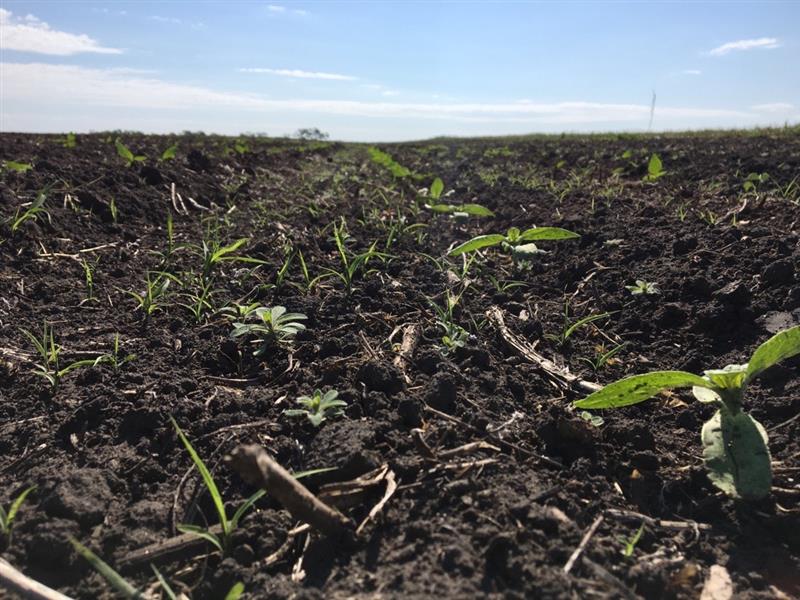Alison Pokrzywinski, Nuseed Sunflower Product Development Manager for North America, shares what she feels you will need to know to help prevent and combat weeds in your sunflower fields this spring.

The winter season in the Northern Great Plains has been quite unusual. There were only a few days that truly felt like winter, and the residents enjoyed some relatively higher temperatures. Although the daylight hours were still short, the number of days when the temperature dropped below zero was significantly less compared to last winter. Unfortunately, the season was unfavorable for those who had recently purchased a snowmobile to explore the trails or were hoping to catch a walleye through the ice.
The sunflower region, which expands from Pierre, SD to Northern, ND, has experienced a wide range of temperatures recently. To the South, temperatures have ranged from the 30s to the 70s, while in the North, temperatures have been anywhere from single digits to 50 degrees Fahrenheit. Ground that was once covered in large water puddles a week or two ago has now opened. There have been talks of an early spring for planting, but as of March 19th, snow is still in the 10-day forecast and temperatures have cooled back down. Nevertheless, there is very little snow in the region, and once temperatures stay warm, fertilizer trucks and seed tenders will be moving throughout the area.
The issue of weeds in sunflowers has been on my mind lately, especially with the spread of Palmer Amaranth and Waterhemp in our region, and the confirmation of Group 14 resistance to kochia in North Dakota. To maintain successful and clean sunflower fields, two crucial steps are scouting and pre-emergence herbicides. Sunflowers are usually one of the last crops to be planted on-farm, with planting dates ranging from early May to mid-June. If you are an early May grower, your field preparation or burndown will likely coincide with getting rid of the first flush of weeds. While there may be numerous weeds at this stage, they will typically still be small.
If you plan to plant sunflowers later in the season, it’s important to take a two-step approach to weed control. Waiting until June 1st to tackle weeds will result in larger weeds that are harder to control. To deal with this, growers can take different approaches depending on factors like tillage, weed types, and their overall program. Some growers apply some of their pre-emergent herbicides in the fall, followed by another application pre-plant or pre-emerge. Others may use an early burndown of Roundup mixed with a short residual herbicide like LV6, but they need to be mindful of plant-back restrictions. Regardless of the approach, it’s crucial to include a pre-emergent herbicide in the program when planting sunflowers. Relying solely on a post-emergent application of Express or Beyond Xtra is not enough to control the variety of weeds that typically grow in our soils. There are many pre-emergent herbicides available on the market for sunflower growers to choose from, and most of them are a combination of group 14 and group 15 herbicides. Combining these two groups will provide the most effective defense against the toughest weeds in the Northern Great Plains.
